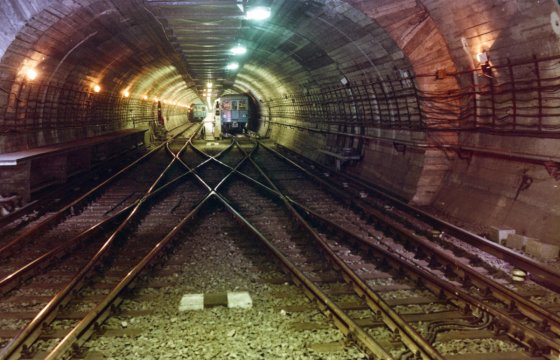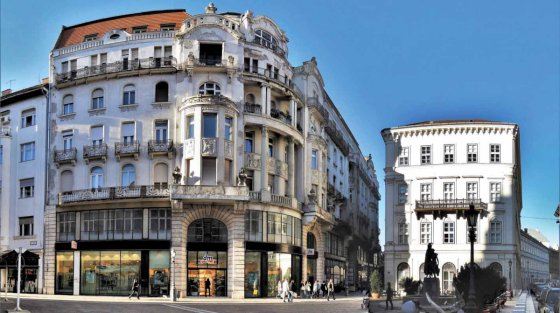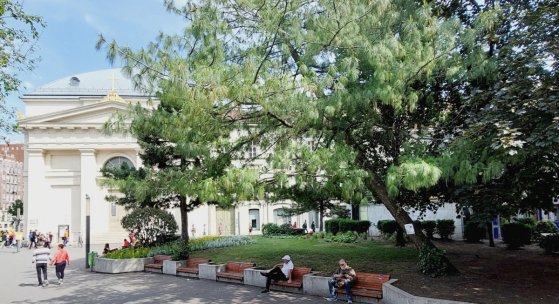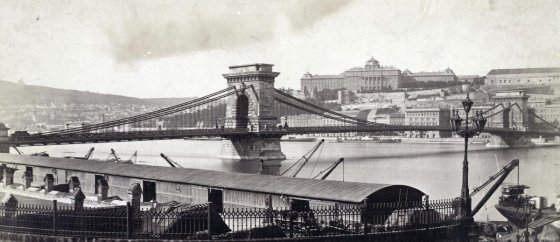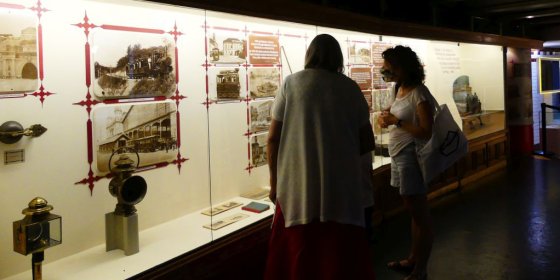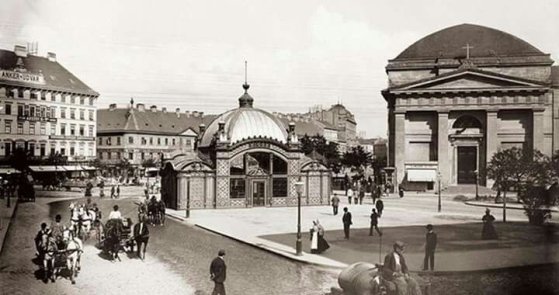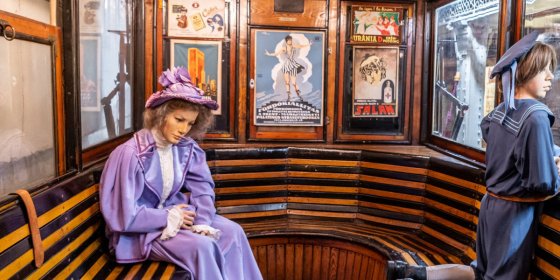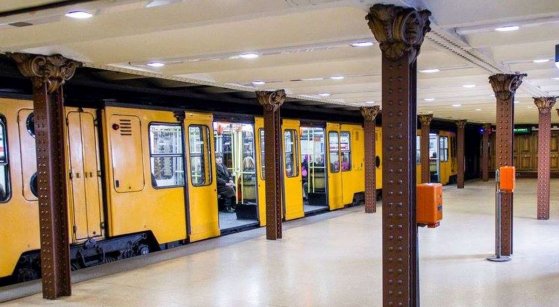 The „intertwined history” of the bridges and the city of Budapest
Which ideas and events have shaped the fate of bridges of Budapest and the cityscape? Alongside many other interesting facts, this question is also answered this newly published book by the Budapest City Archives, which introduces the history of bridges in Budapest.
The „intertwined history” of the bridges and the city of Budapest
Which ideas and events have shaped the fate of bridges of Budapest and the cityscape? Alongside many other interesting facts, this question is also answered this newly published book by the Budapest City Archives, which introduces the history of bridges in Budapest.
Deák Square
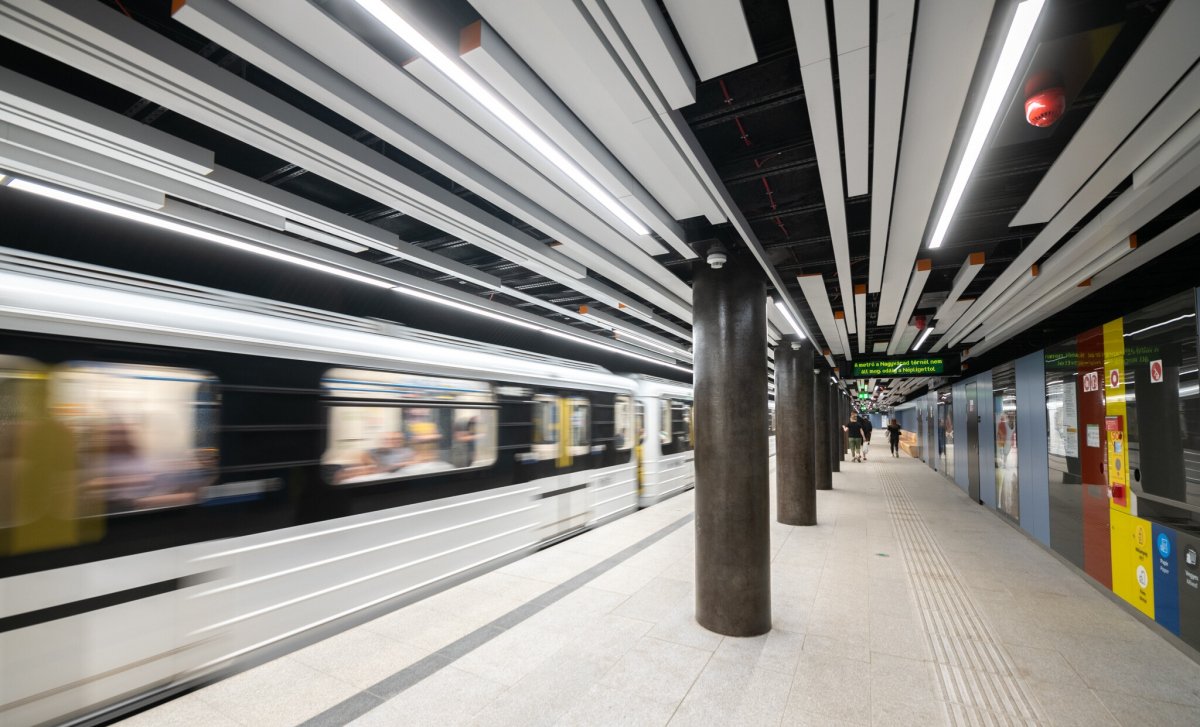 The Deák Square and Ferenciek Square metro stations will be handed over on 23 January
The Deák Square and Ferenciek Square metro stations will be handed over on 23 January
January 11, 2023 at 6:00 PM
The Ferenciek Square and Deák Ferenc Square metro stations will be opened to passengers on 23 January. According to the plans, the metro will run on the entire line from the middle of March, and from the middle of May, passengers will also be able to use the last renovated Nagyvárad Square and Lehel Square stations.
Metro 2 was completed 50 years ago - Construction was started with spades and shovels
December 21, 2022 at 11:00 AM
Despite the fact that the first underground railway on the European mainland started in Budapest in 1896, the next underground railway section was completed in its entire length only fifty years ago, in December 1972. The construction lasted for more than twenty years and did not lack difficulties.
Giant trees are being planted in Szomory Dezső Square in the inner city
November 25, 2022 at 11:00 AM
Urban-tolerant giant trees with broad sprawling crowns are planted on Szomory Dezső Square, adjacent to Deák Square. In addition, the fountain pool of the Well of the Danaids on the square will also be renovated.
Farewell to the iconic tree of Deák Square - The fallen pine is cut down
May 24, 2022 at 7:30 PM
They cut out the iconic tree of Deák Square, the Himalayan silk pine leaning over the benches. The fallen tree was a favorite meeting place for many, and since the people of Budapest were attached to it, Főkert also said a sensitive goodbye to it on its website. It has been said that it cannot be transplanted or supported, there is no other option but to cut it down, as the popular tree is accident-prone.
Before the big changes - Budapest at the time of the compromise
May 2, 2022 at 11:00 AM
The Austro-Hungarian Compromise, established in 1867, ushered in one of Hungary's heyday. Under the Compromise of 155 years ago, a dual system was created - hence our common word dualism, which is used to characterise the period up to 1918. This upswing has brought about great changes: as a result of industrialisation, more and more people have moved to the cities, and the population of Budapest has grown exponentially. But what was the capital like in the second half of the 1860s?
The Millennium Underground Railway was envied by the Viennese - New exhibition on the underground opens
June 26, 2021 at 3:00 PM
If someone is visiting Deák Square and has half an hour to spare, the Underground Railway Museum has a new exhibition to offer about the 125-year-old Millennium Underground Railway. Numerous photographs, artefacts, plans and models have been exhibited, from which many hitherto lesser-known curiosities are revealed.
Ornaments for three decades – The entrance halls of the Millenium Underground Railway
March 4, 2021 at 10:00 AM
Continental Europe's first underground railway was opened on 2 May 1896, the first day of the national millennium celebrations, after only nineteen months of construction. The unique vehicle strengthened the character of Budapest as a global city, connected the centre of Pest with City Park. The implementation involved construction not only underground but on the surface: with the exception of the Opera House, an entrance hall was built at the stations. However, these ornate little buildings later fell victim to the “modernisation” of the cityscape.
45 years under ground – A museum on Deák Square about the Millennium underground Railway
November 4, 2020 at 3:00 PM
A museum housed in an abandoned underground tunnel, filled with original rolling-stock, and a slew of objects from the history of one the world's oldest underground railways. All of this for the price of a single ticket in the middle of the city, under Deák Square. The Millennium Underground Museum opened 45 years ago.
Once a miracle of the National Millennium it was covered by graffiti a hundred years later
September 14, 2020 at 9:00 AM
Built under only 20 months, the first of its kind on the continent and tried by the King. The Millennium Underground Railway, commonly known as the kisföldalatti "small underground" may be Budapest's most likeable means of public transport. It most recent major renovation was finished 25 years ago.
More articles
 The „intertwined history” of the bridges and the city of Budapest
Which ideas and events have shaped the fate of bridges of Budapest and the cityscape? Alongside many other interesting facts, this question is also answered this newly published book by the Budapest City Archives, which introduces the history of bridges in Budapest.
The „intertwined history” of the bridges and the city of Budapest
Which ideas and events have shaped the fate of bridges of Budapest and the cityscape? Alongside many other interesting facts, this question is also answered this newly published book by the Budapest City Archives, which introduces the history of bridges in Budapest.
 The Bridge Report, which brought a turning point in the history of Budapest
A travel report that changed the history of Pest and Buda, as well as Hungary. The little book contributed to the change of half a thousand years of legal customs and the implementation of an investment of unprecedented size and technical quality. This book was The Bridge Report [Hídjelentés in Hungarian].
The Bridge Report, which brought a turning point in the history of Budapest
A travel report that changed the history of Pest and Buda, as well as Hungary. The little book contributed to the change of half a thousand years of legal customs and the implementation of an investment of unprecedented size and technical quality. This book was The Bridge Report [Hídjelentés in Hungarian].
 Drama on the university wall - The heroic monument was planned 95 years ago
In the constant hustle and bustle of the Egyetem Square in Pest, the students may not even notice the monument that decorates the short section of wall between the church and the central building of ELTE. However, it commemorates their predecessors, the heroes who fought for their country in World War I, and those who heroically helped them. The first design of the dramatically collapsing soldier was born in 1928, ninety-five years ago.
Drama on the university wall - The heroic monument was planned 95 years ago
In the constant hustle and bustle of the Egyetem Square in Pest, the students may not even notice the monument that decorates the short section of wall between the church and the central building of ELTE. However, it commemorates their predecessors, the heroes who fought for their country in World War I, and those who heroically helped them. The first design of the dramatically collapsing soldier was born in 1928, ninety-five years ago.

